There are four things you can count on in life…death, taxes, Guillermo Ochoa putting on Gold Glove performances at the World Cup, and Mexico exiting in the Round of 16 (we’ll leave England’s penalty kicks out, for now).
Mexico is one of the 10 most populous countries in the world. Of the nine countries ahead of them, only Nigeria and Brazil are football-first nations. Given their obsessive following of the sport and the fact that all their top athletic talents take the football route, Mexico’s limited success at the World Cup is a bit baffling.
The last time Mexico reached the quarterfinals was in 1986. They were banned from the 1990 World Cup and have finished with Round of 16 exits in seven consecutive tournaments. Even in 2022, they’ve drawn Argentina in their group and find France as the likeliest opponent should the Mexicans finish second in their group. So, in the group stage, they’ll face the third favourite with the hope of playing a knockout round game against the second favourite. It’s a difficult draw for the nation, one that looks likely to prolong the quarterfinal drought.
But that won’t stop the Mexicans from putting on a show in Qatar. Regardless of the opponent, Mexico will play with pride and the expectation of going toe-to-toe with their opponent, be it Argentina or France. This tactical analysis will give a preview and scout report of Mexico’s expected tactics and personnel, as well as some of the red flags that have come to the forefront in the qualifying rounds and recent friendlies.
Predicted starting XI
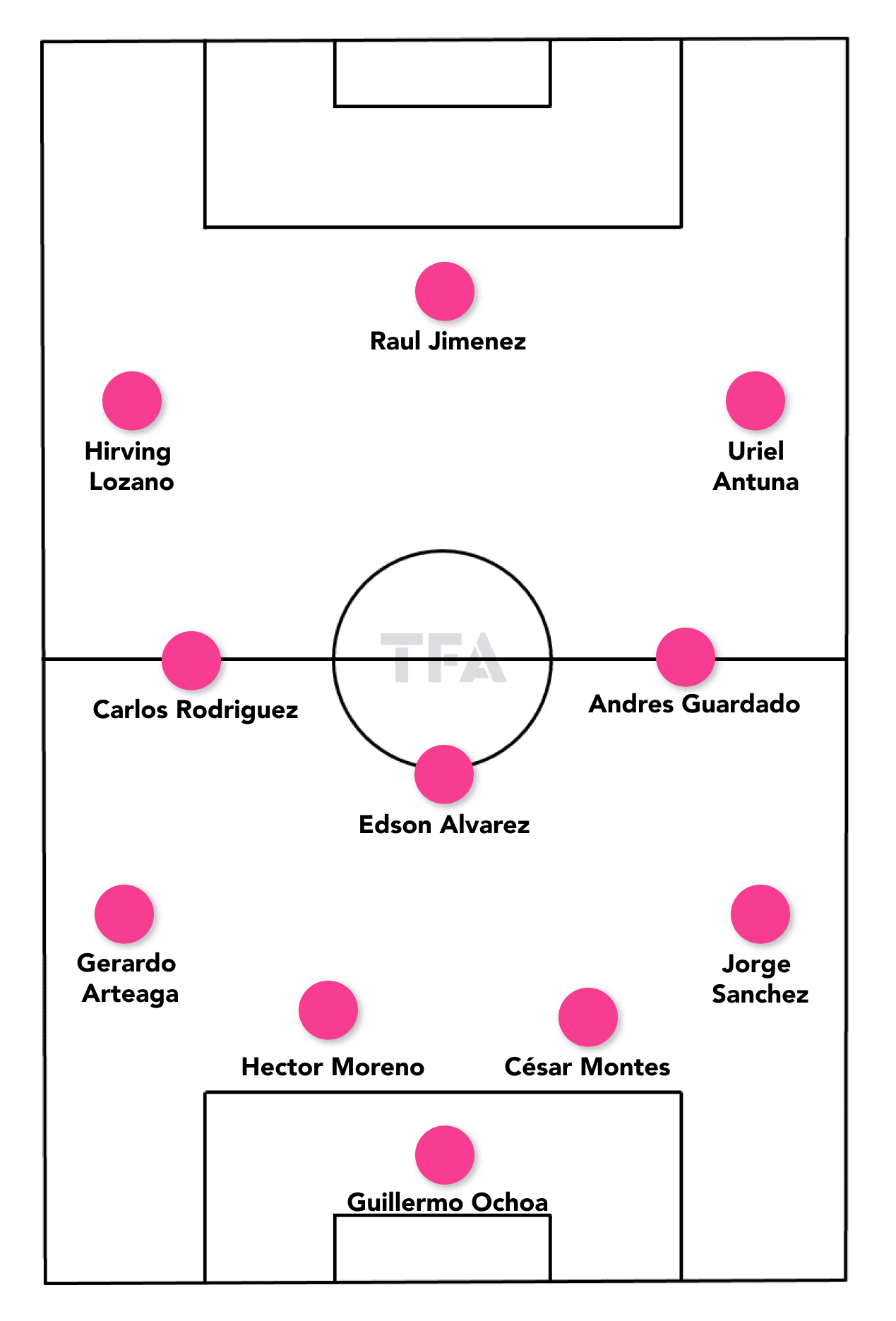
Mexico is one of CONCACAF’s two perennial powers, the other being the USA. Like many traditional powers, they have a very specific style of play and tactical system. When Mexico takes to the pitch in Qatar, they will set out in a 4-3-3. The objectives are dominance in possession, dictating temp, and aggressively counterpressing. Regardless of the opponent, Mexico wants to play on the front foot.
That identity has inevitably hurt them in the past, but it has also produced many incredibly entertaining games. When you watch the Mexican national team in action, you’ll always see the pride they have for their country and the honour of defending the badge. They’ll bring energy, intensity, and aggression to Qatar.
Looking at the predicted starting XI, it’s Ochoa time. It seems like every four years he puts on a Golden Glove-worthy performance at the World Cup. At the age of 37, this will likely be his last hurrah.
The veteran, Moreno, will anchor the backline. He’s surrounded by three very talented players in Montes, Arteaga, and Sánchez. The two outside-backs will take very aggressive positions when Mexico is in possession. Look for them to be highly involved.
In midfield, the young Ajax stand-out, Álvarez, is undoubtedly the most talented player in the middle of the pitch, if not the entire squad. He’s an emerging talent and a vital piece of Mexico’s World Cup fate. Rodriguez will likely play the #10 while Guardado and Herrera rotate at the #8.
Up top is full of question marks. Tecatito Corona suffered an injury and will miss the World Cup, leaving Mexico without their preferred right forward. To make matters worse, Jiménez is struggling to regain his fitness. Though he should make the roster, Mexico can hardly count on him to be productive while out of form. That puts a lot of pressure on Lozano. Antuna looks like the choice on the opposite flank, but it’s the star power of Chucky that Mexico will lean on. Should Jimenez miss the tournament, the burden only increases.
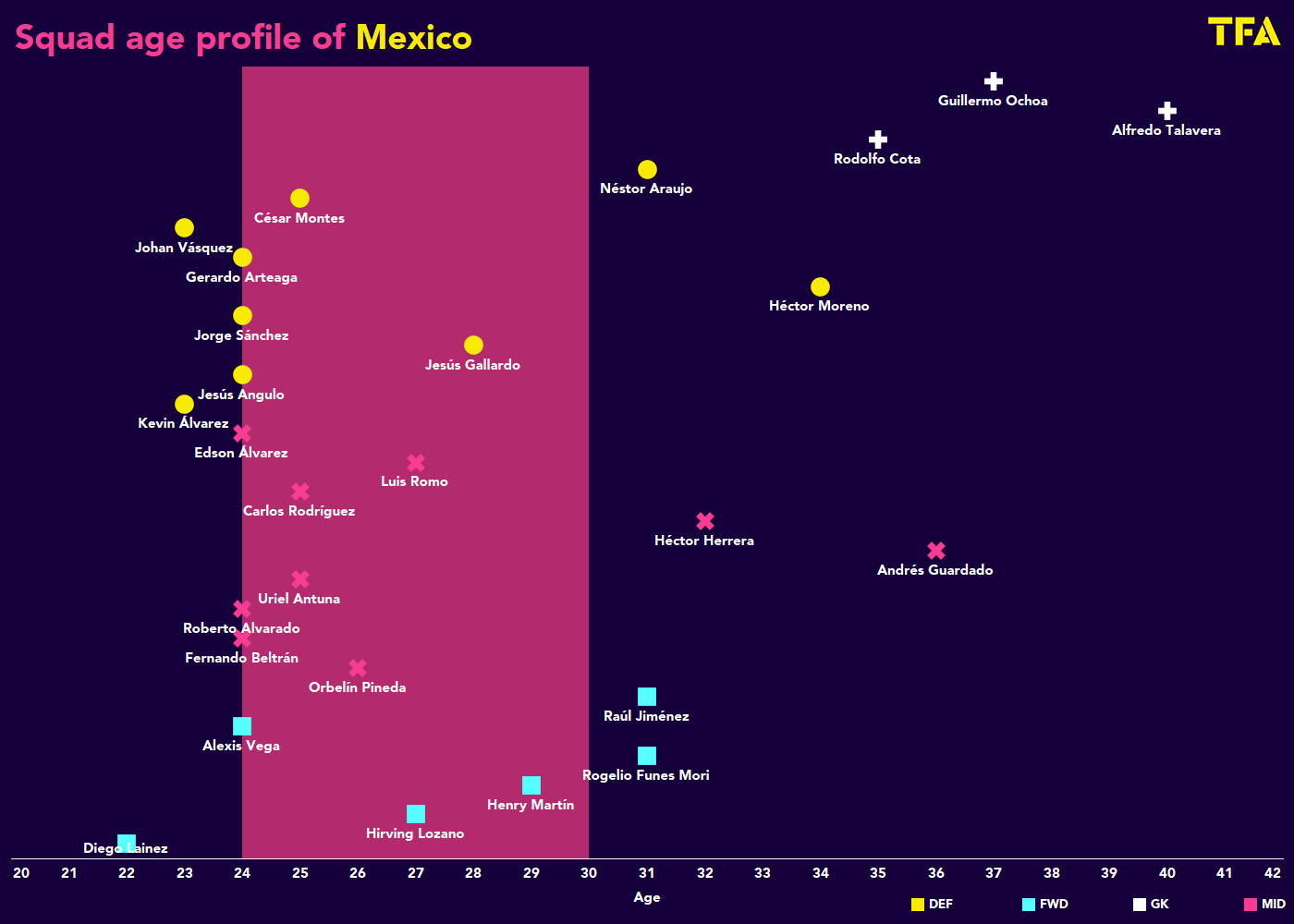
Looking at Mexico’s squad age profile, they have a lot of key members on the wrong side of 30. Moreno should do well at centreback and Ochoa will be just fine as the goalkeeper, but the diminishing physical qualities of Guardado and Herrera are major concerns for the Mexicans, which will be seen throughout this analysis.
Mexico does have a talented group of players just entering their peak years. Overall, the starting lineup will feature a blend of promising young players and veterans on their last leg.
Attacking phase
To give a sense of Mexico’s qualifying campaign, we’ll look at the data, first for their attacking metrics, to see where the strengths and weaknesses in the squad lie. At first glance, it’s abundantly clear that Mexico’s glaring weakness is the struggle to convert possession into quality chances.
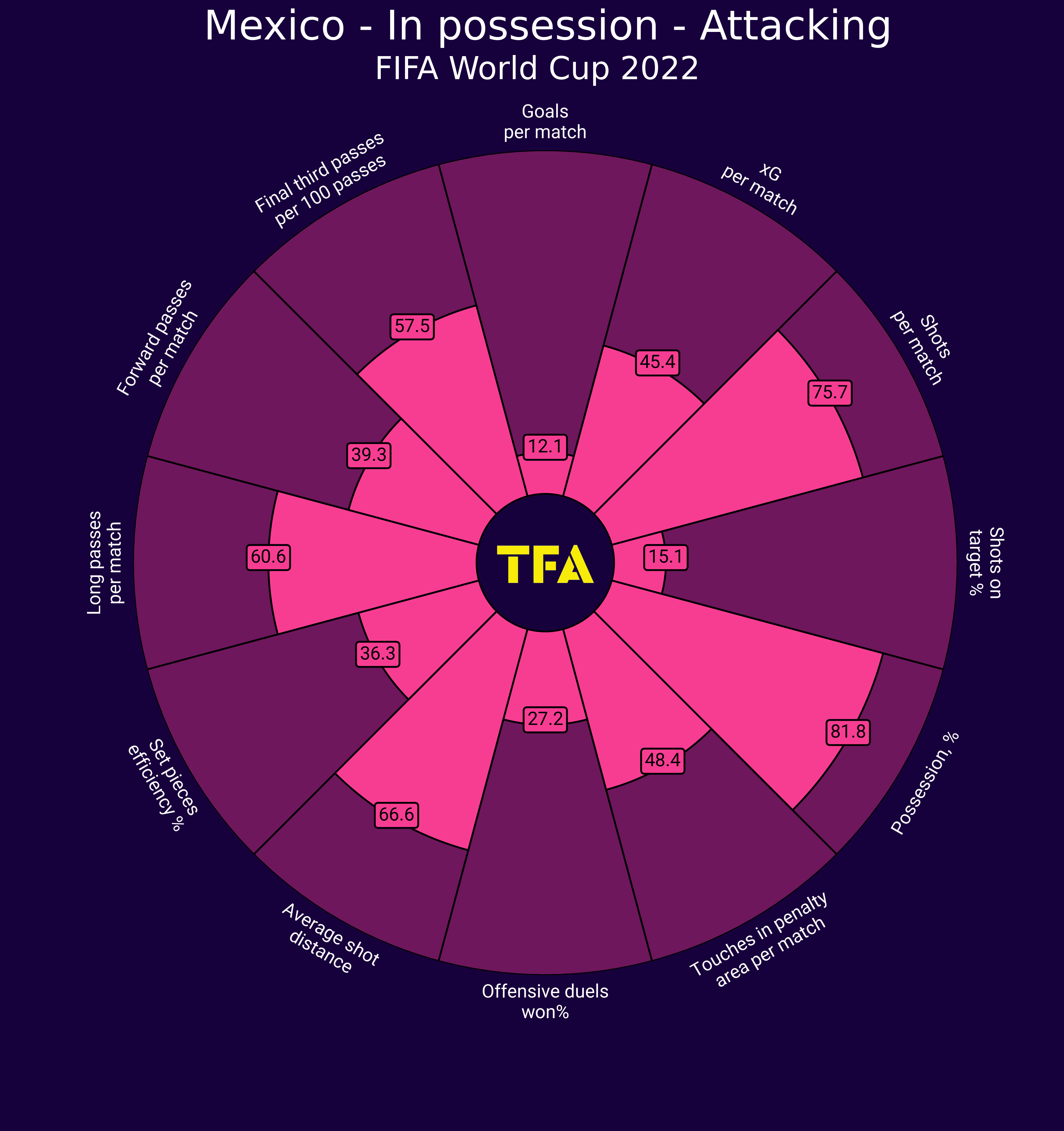
Rating in the 82nd percentile for possession among the 32 teams competing at the World Cup, Mexico was able to convert their high share of possession into shots, coming in at the 76th percentile.
While they can take positives from those two data points, holding them in comparison to goals and xG per match gives a sense of their issues. Despite their dominance in possession, they rate slightly below average in xG per match and were among the worst teams in the field for goals per game. Jiménez has been Tata Martino’s go-to striker, but the Wolves player is coming back from an injury and was struggling for minutes even before the fitness concerns.
To score at the World Cup, Mexico will have to be exceptional in open play. In their 4-3-3 system, that starts with a strong build-out. Mexico’s game model is a very standard 4-3-3. Two centre-backs split into the half spaces, outside-backs will push high and the midfield triangle will remain tightly connected with a single pivot. That pivot player will oscillate between a higher position in midfield and dropping in between the centrebacks.

Mexico’s midfield does rotate very effectively. If Álvarez, who will play the six, steps into the midfield, the player in the box-to-box role, typically Guardado or Herrera, will drop deeper to maintain the triangular structure.
If Mexico builds out, they’ll look to play through the lines and progress the ball near midfield. As the team chooses to attack left, centre, or right, the forwards will adjust their positioning to coordinate their width with the sequence of play. If the ball is in the wings, expect the near-sided winger to check towards the ball, the striker to pinch into that near half-space, and the far-sided forward to look for opportunities to get in behind.
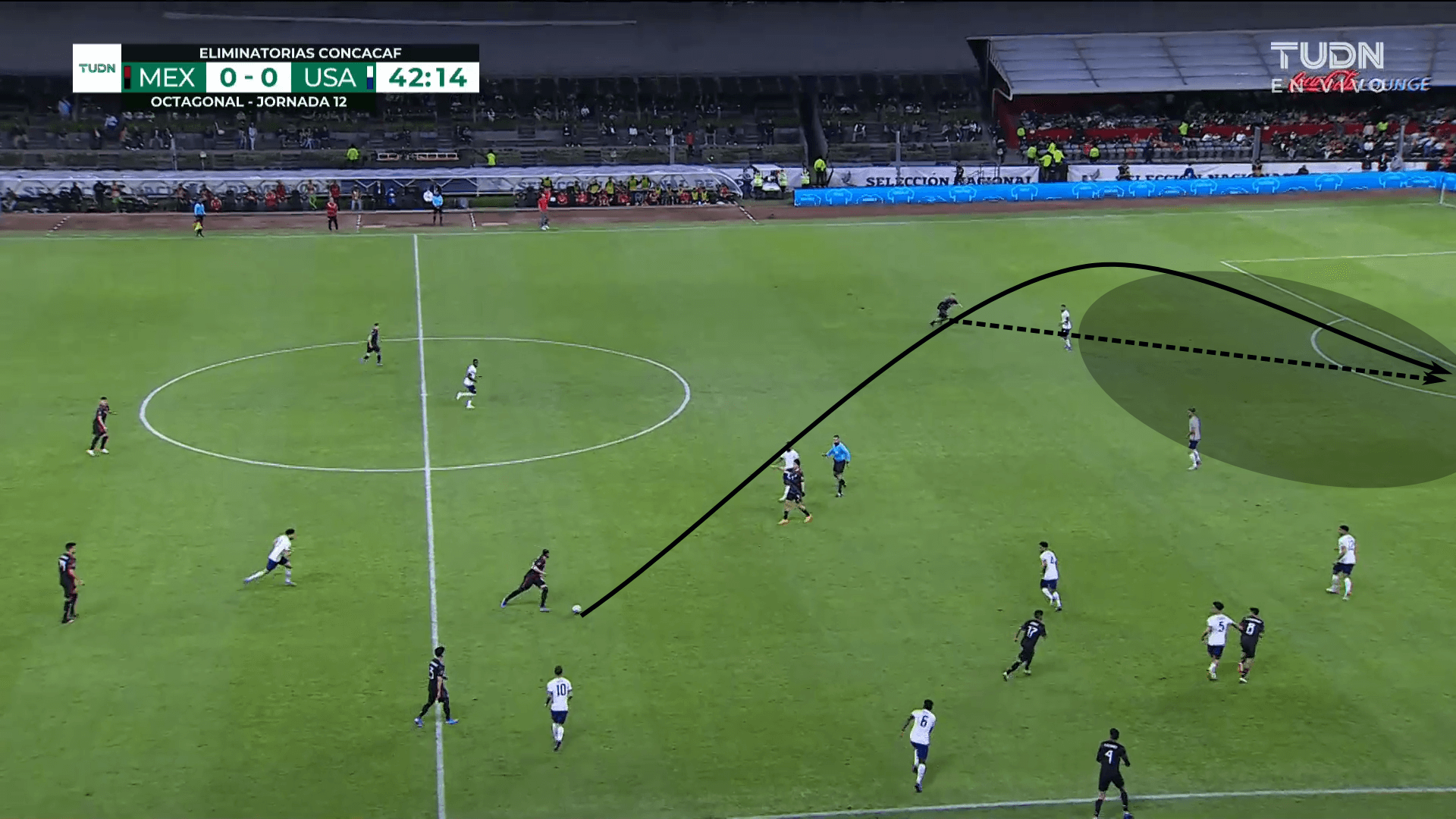
If play is built centrally, look for the two wingers to maintain their width, at least initially. El Tri will look to stretch the backline in an attempt to get him behind. If the opposition’s backline remains narrow, Mexico will look to play into the wingers, either looking for them to engage in 1v1 duels or drive inside to create the overlap for the oncoming outside-backs.
Once Mexico gets into the final third of the pitch they will look to push numbers into the box. They routinely get at least three players into the box, overloading centrally to increase their chance of latching onto a service. In this example against Columbia, a clever dummy of a through ball got Mexico behind the backline, leading to their second goal of the game.
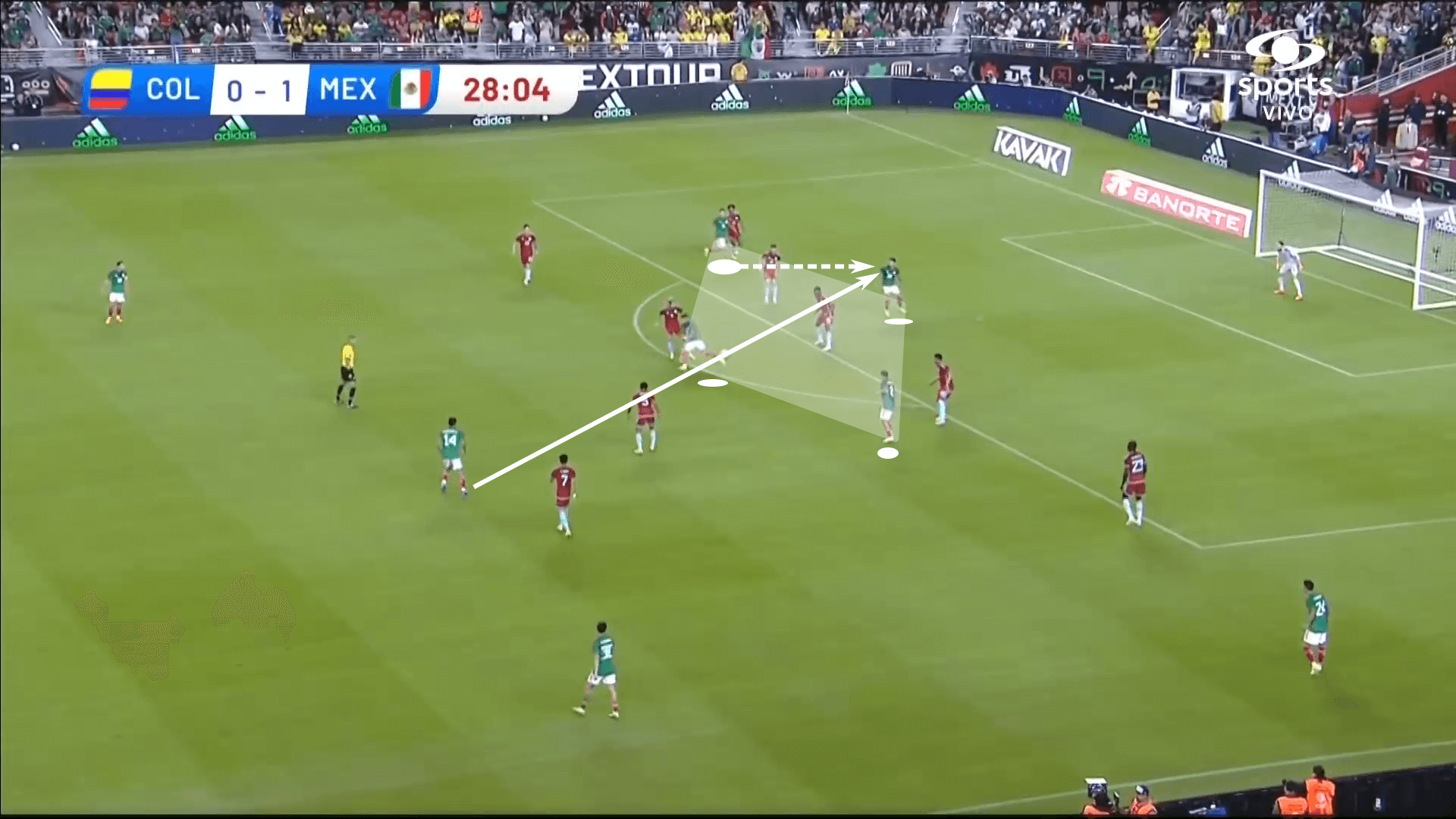
In terms of Mexico’s attacking tactics, they should show well at the World Cup in the way they build out of the back and play through the lines. It’s when they get to the final third, or really the box, that issues emerge. Without Chicharito’s trademark poaching in the 18, Mexico may struggle to find the back of the net in Qatar. That will increase the attacking burden on Chucky Lozano, especially if Jiménez is not in form. Without a comparable replacement at the #9, Mexican fans and the federation will closely track Jiménez’s fitness leading into the World Cup.
Defensive phase
In the qualifying rounds, Mexico conceded just eight goals in 14 games, tying Costa Rica for the fewest goals against in the continent. Certainly for a side like Mexico, keeping possession of the ball is the best form of defence. Expect them to rack up a lot of possession against Saudi Arabia and Poland. For that critical Argentina matchup, an even split or slight possession advantage to the Mexicans wouldn’t surprise us.
Looking at their World Cup qualifying pizza chart, that possession is probably for the best. Despite conceding 0.57 goals per game in qualifying, Mexico rates very poorly in most critical defensive metrics relative to the other nations competing at the World Cup. One of the most troublesome percentile ranks is their PPDA, or passes per defensive action. Rating in the 9th percentile, Mexico’s issues in transition are a red flag, which we’ll touch upon in a moment. Another troublesome statistic is that they’re one of the worst teams in the tournament in terms of recoveries in their own third. They are a team that will press high, so if they can be effective in the attacking half of the pitch, that metric may not be a concern. However, the 34th percentile for recoveries in the final third for a high-pressing team with an aggressive commitment to counterpressing is hardly inspiring.
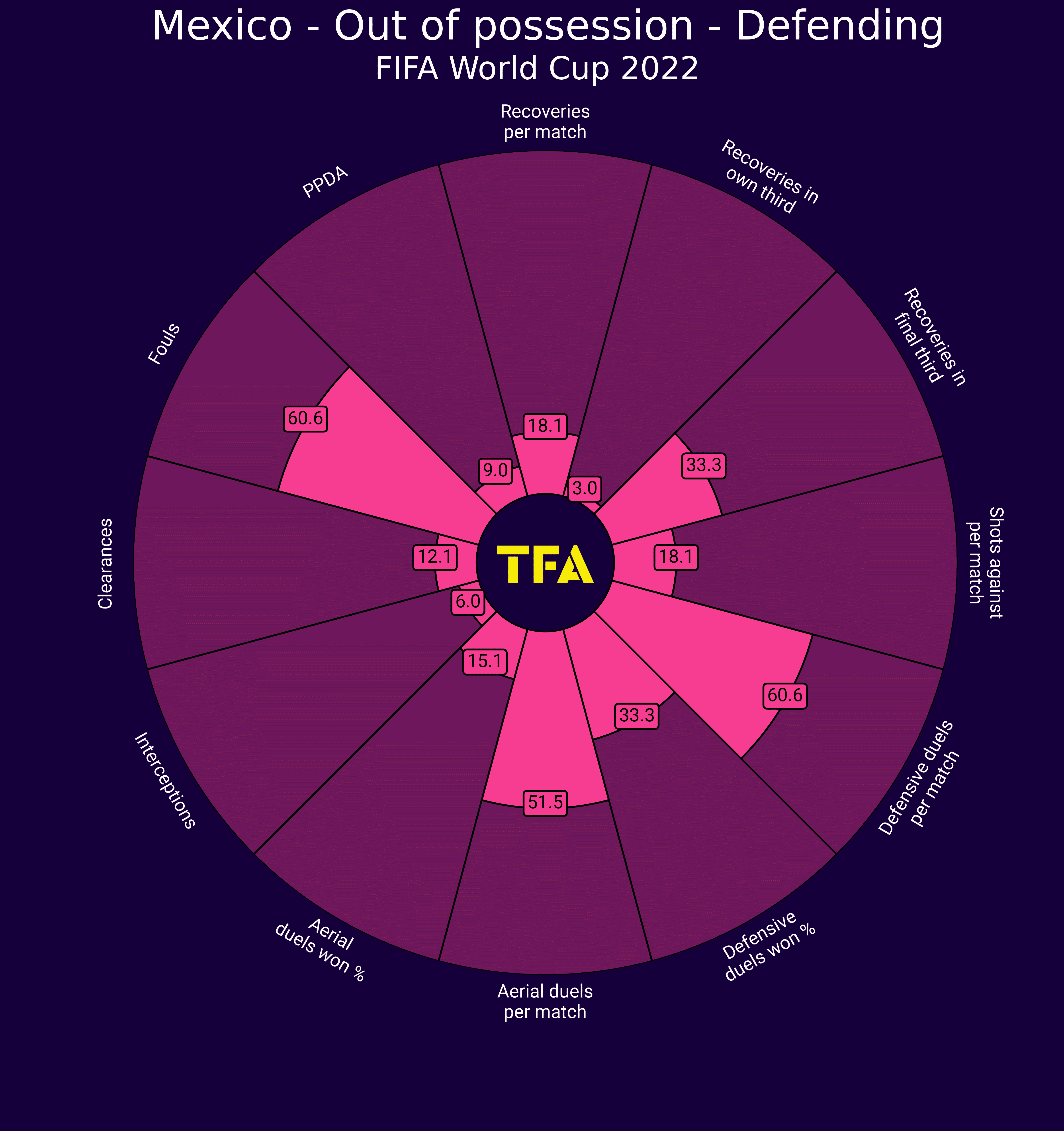
Expect Mexico to use the high press against Saudi Arabia and Poland. However, against Argentina, we could very well see them drop into a 4-4-2 mid-block with an ageing midfield that can’t play a box-to-box game. Those compact lines will create easier backtracking opportunities for Mexico.
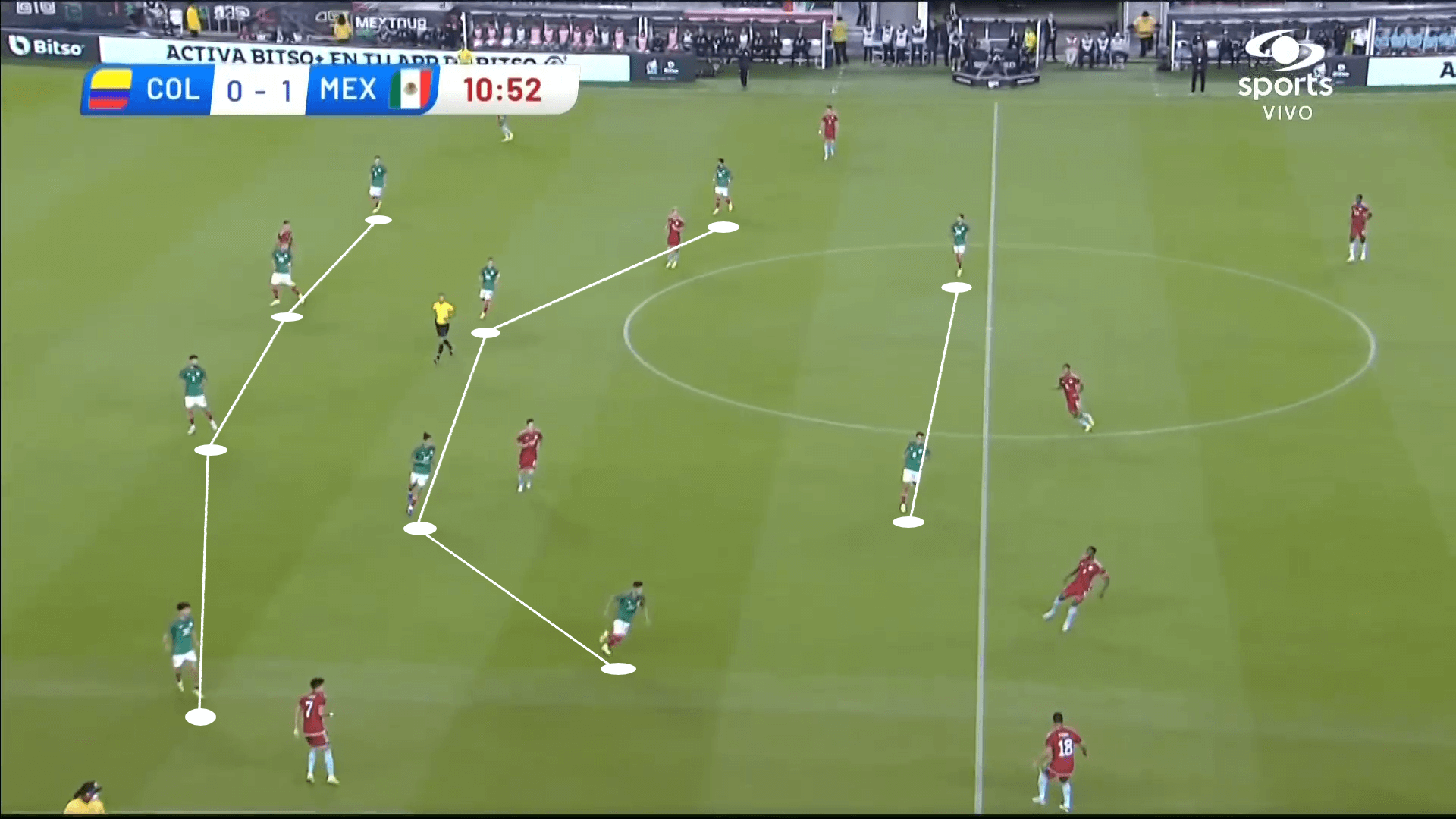
The mid-block takes care of one vulnerability, namely, an ageing squad with the inability to play an end-to-end game. It should also help Mexico’s box defending. With the midfield sitting a little bit deeper, they should offer better support for the backline and better track runners into the box.
They did have an issue tracking runners in the Columbia match, leading to a well-taken second goal. This comes despite sitting a little deeper in the game. As Columbia made their way into the box, they were able to find lanes to send negative passes, as well as gaps in the Mexican lines that allowed the South Americans to get good looks at goal.
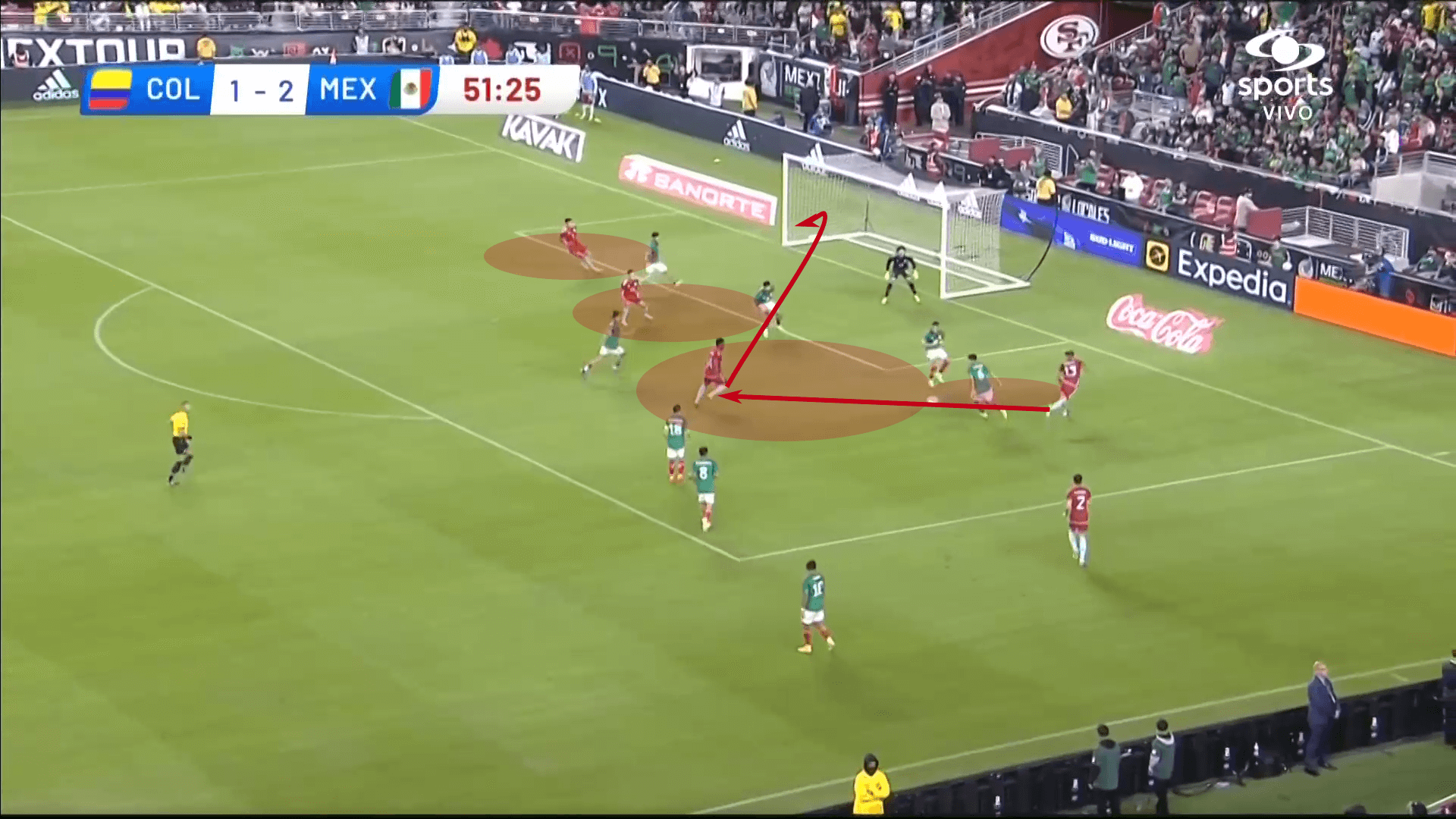
Improved organisation, placing intense pressure on the opposition’s first attacker, and timing of pressing triggers will be massive for Mexico. They have had issues in all three areas leading up to the tournament, leading to concern among the fan base.
Take this example against the USA. All 10 Mexican outfield players are in that shaded area. The camera angle distorts the size a little bit, but it’s approximately a 25m square. The press is very aggressive, which is fine provided Mexico wins the ball. They simply can’t afford to let the USA play out of their press.
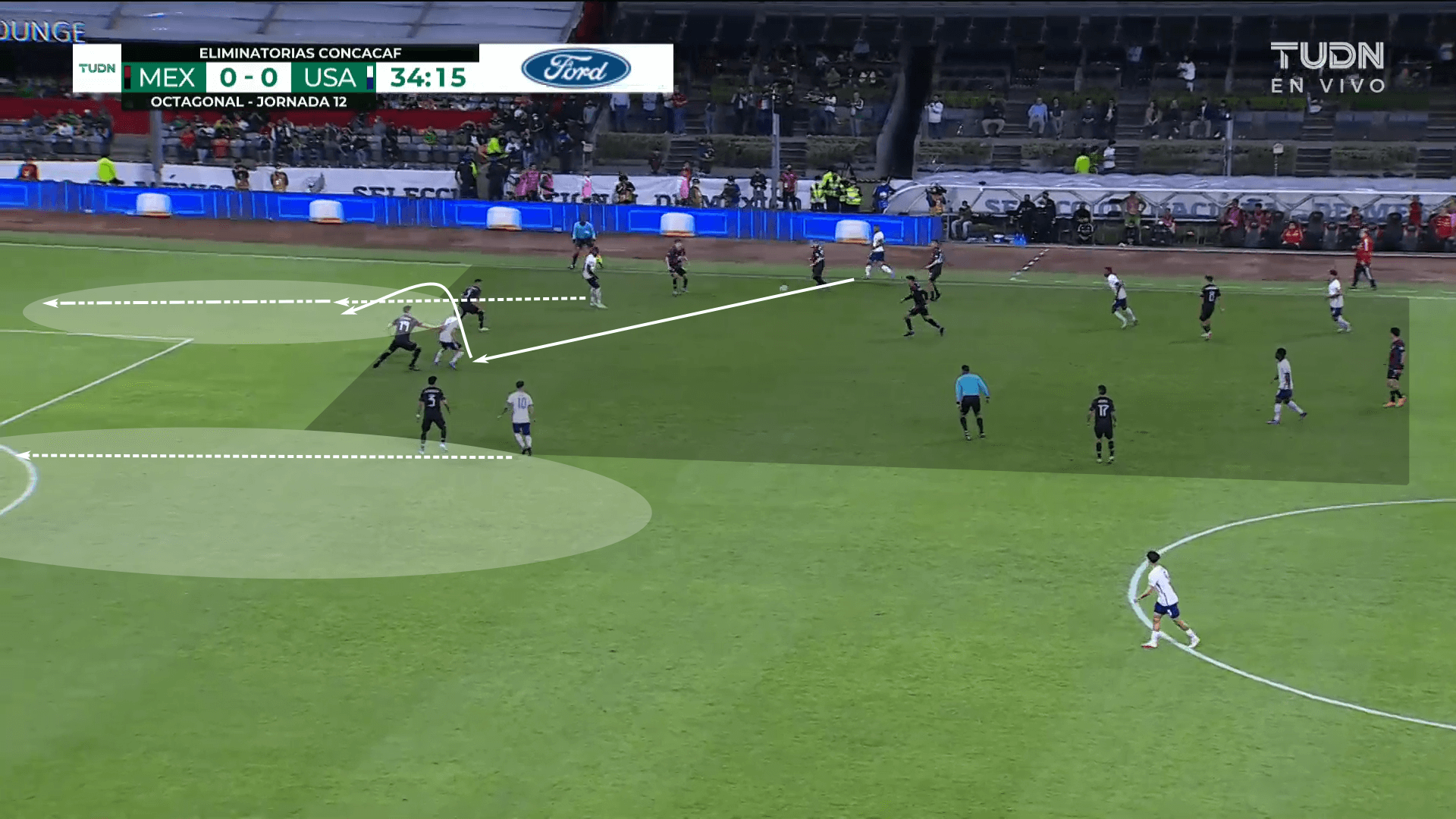
However, that’s exactly what happens. The Yanks can play into the forwards and clip the ball behind the backline. That puts them into the box and leads to a beautiful delivery across the goal mouth. Chelsea’s Christian Pulisic puts his shot right at Ochoa, keeping the game knotted at zero, a score line that would not change despite the ruckus crowd in the famed Estadio Azteca.
Given Mexico’s issues in front of goal, they simply can’t afford to slip up defensively.
Transitions
As this analysis progresses to transitions, let’s start with the attacking phase. When Mexico looks to counterattack, they will look to get behind the opposition’s outside-backs. Notice the centre-forward occupying both Colombian centrebacks. That’s a perfect scenario for Mexico. If Chucky and the other wide forwards can consistently get behind the opposition’s outside-backs, they will create 3v2s and 3v3s.
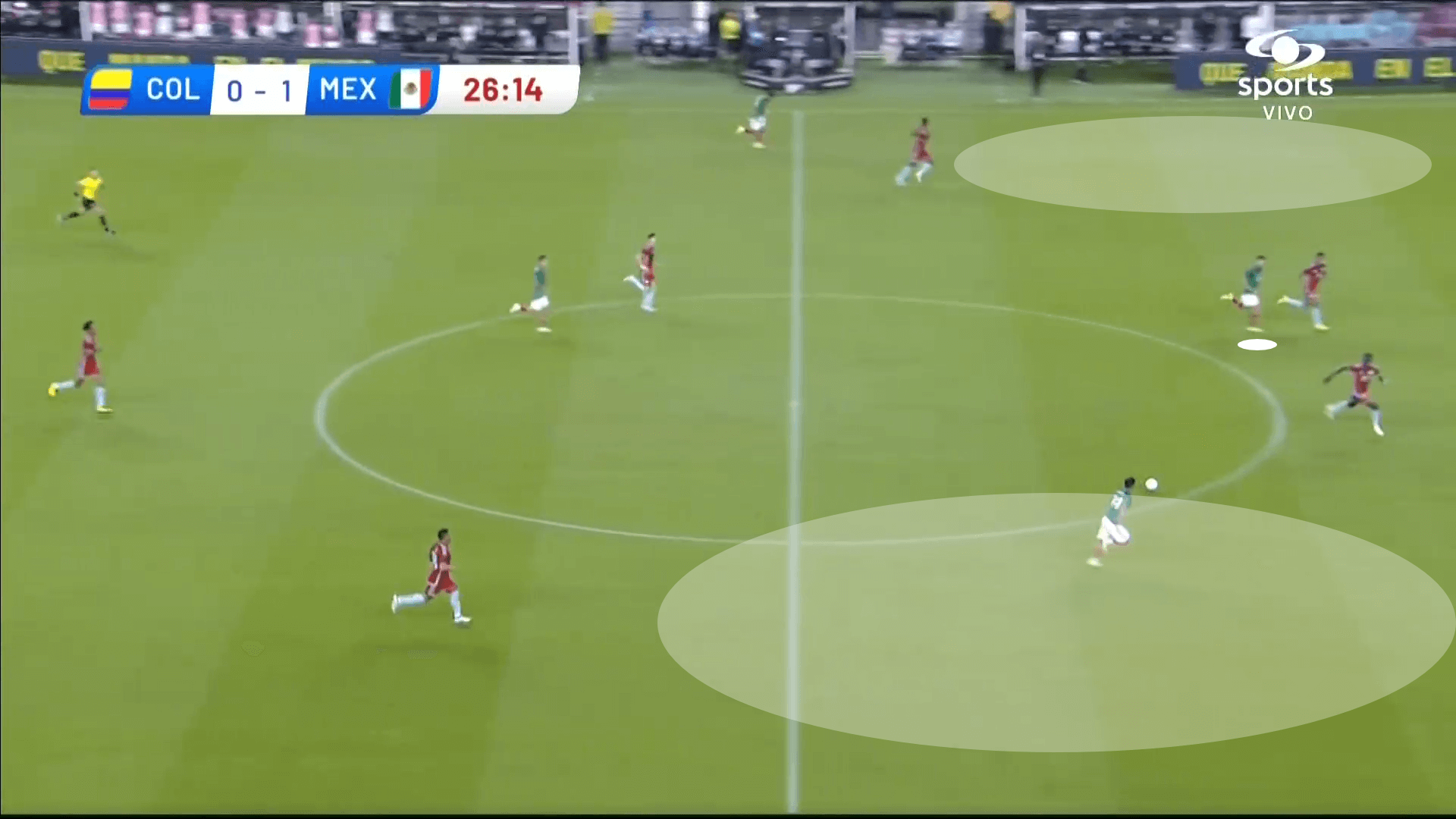
In those attacking transitions, the front three and #10 will bear the brunt of the attacking burden. Part of this is down to the system, but another part is the personnel in midfield. At the risk of beating a dead horse, Mexico’s midfield simply won’t have the legs to consistently get in support of the front three.
Take this example against Canada. Mexico recovered the ball in their defensive third, then immediately played into the forward line. Initially, this was a 4v3 scenario in Canada’s favour. Three seconds after the ball is initially played in, look at the evolving context. While it’s still 4v3 to Canada behind the ball, they have another four players quickly recovering. In the end, the Canadians were able to snuff out the counterattack and comfortably restart their attack.
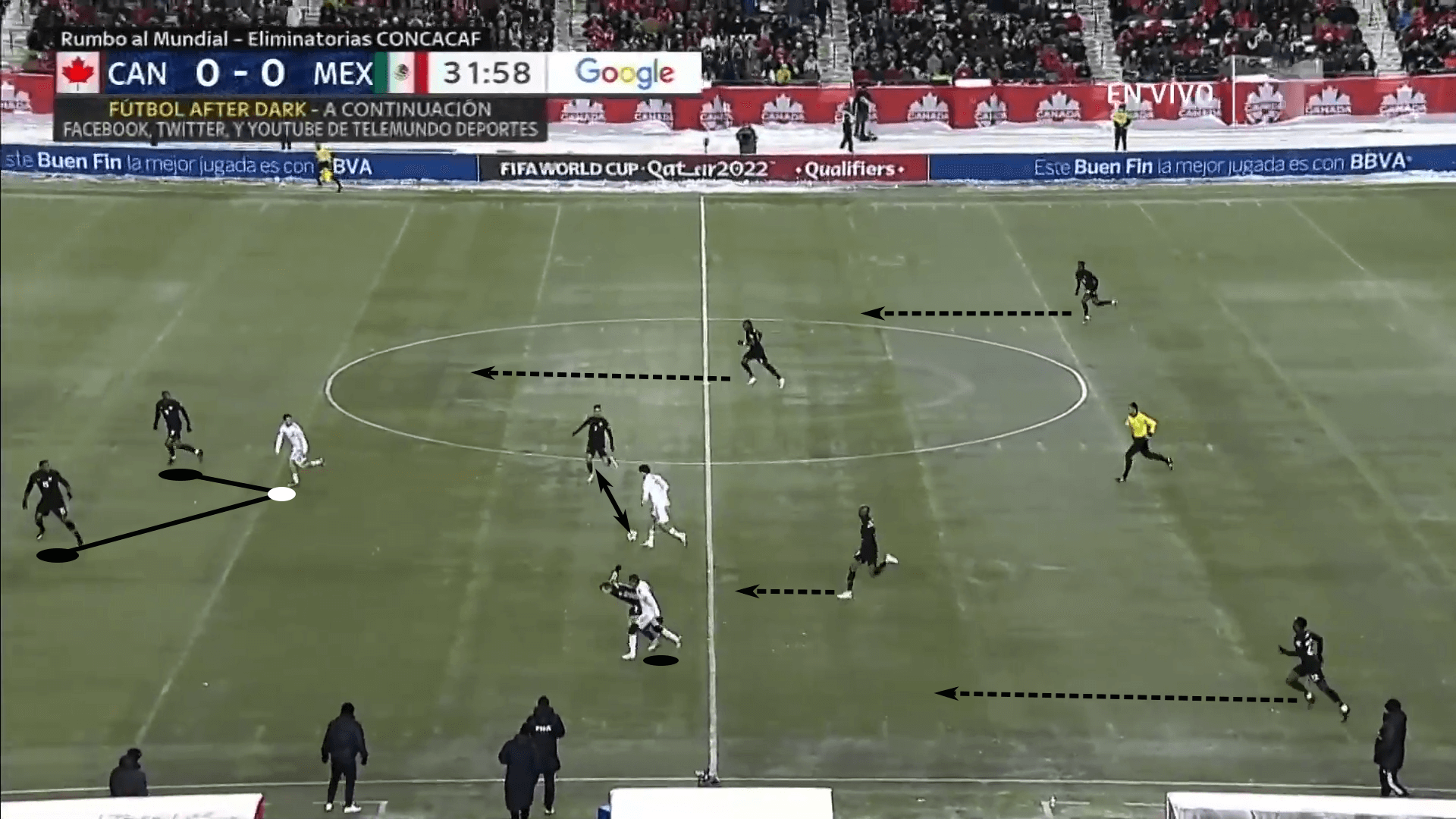
At the World Cup, when Mexico’s opponents progress into the attacking half of the pitch, El Tri must get organised quickly and slow the tempo of the game to encourage the opponents to take more aggressive starting positions. As the opposition becomes more expansive, Mexico will increase the likelihood of the front three’s success in attacking transitions.
And the flip side is true for Mexico. Since they prefer to dictate tempo through possession, Mexico must closely guard against unstructured attacks. Better opposition can hurt them if the CONCACAF Gold Cup runners-up send too many numbers into the final third. If Mexico’s rest defence is too expansive with too little cover behind the ball, their opponents will find a lot of joy in the counterattack, much like Canada did during World Cup qualifying.
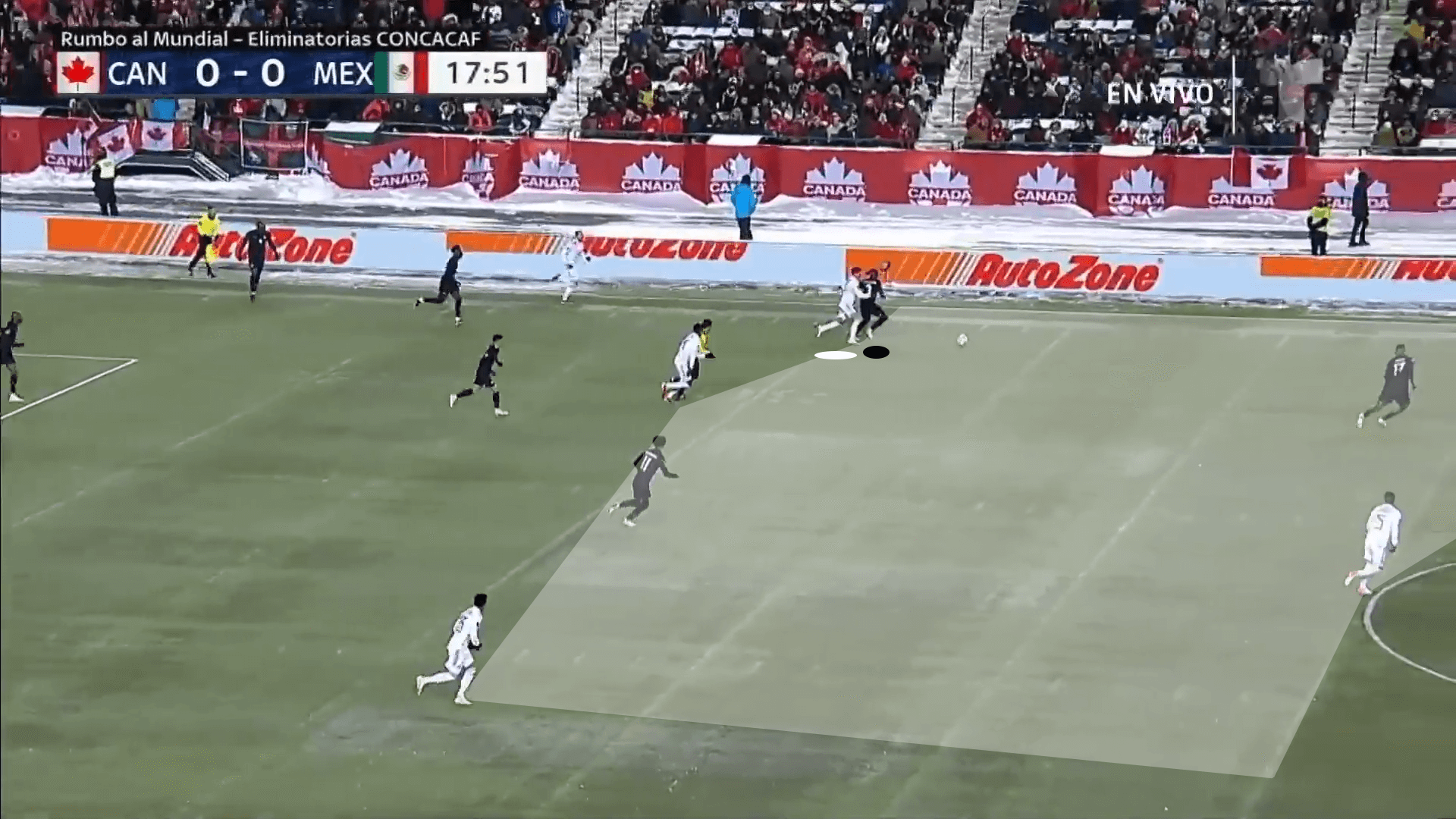
Mexico’s ineffectiveness in attacking transitions has been an issue the past 18 months, as has an expansive rest defence that has led to poor counterpressing and quality chances conceded during opposition counterattacks. They ask a lot of their two centrebacks and defensive midfielder. Every so often, the squad asks too much of them. There’s simply too much ground to cover.
Mexico’s fate at the World Cup will likely come down to the quality of their attacking and defensive transitions.
Attackers
Looking at Mexico’s forwards, Jiménez and Lozano are certainly the headliners. Though the former has fallen upon tough times in the EPL, Chucky and his Napoli side are flying in Serie A.
Lainez is the next most recognizable name among the forward group. Once Mexico’s Golden boy, his time at Real Betis was underwhelming, leading to a loan move to Braga. Though he is primarily coming off of the bench in the Portuguese League, Lainez is gradually showing the talent that made him such a prominent young prospect.
Chivas Guadalajara’s Vega is enjoying a strong season and will likely get some time.
If Jiménez is unfit for the World Cup or suffering a glaring lack of form, Mexico does have some options. Martín and Funes Mori are playing well in LigaMX, plus there’s the exciting young Giménez at Feyenoord.
Lozano is the lone lock in Mexico’s front three, but there is plenty of talent for Martino to fall back on.
Midfielders
This analysis has admittedly been harsh on Mexico’s midfield with the 24-year-old Álvarez operating as the pivot player and 25-year-old Rodriguez likely to start as well. Perhaps calling this an ageing midfield is unnecessarily critical.
That said, it’s the third member of the midfield, which will typically be either the 36-year-old Guardado or 32-year-old Herrera that slows this group down. Mexico’s playing style places extraordinary physical demands on the midfield three. When the box-to-box players are incapable of filling their function, it places additional stress on the #6 and #10. One issue is that these two are highly respected and still quality players, making it difficult for Tata to sit them.
There are other options, such as Monterrey’s Romo, as well as a few players who are on the final roster bubble. Regardless of who makes the flight to Qatar, expect Guardado and Herrera to command significant minutes in the Mexican midfield.
Defenders
Defence is another area of strength for the Mexican national team. While there are not many who are considered household names in the global game, many of the players are either based in LigaMX or have recently left the league for Europe such as Arteaga and Sánchez. Arteaga is having an excellent season with Genk and Sánchez is gradually picking up minutes with Ajax.
At centreback, look for the leadership of Moreno, who is back in LigaMX after a storied career that took him to La Liga and Serie A. His club teammate at Monterrey, Montes, is the likely partner at the back, giving the Mexicans excellent chemistry along the backline.
Araujo and Angulo offer depth at centreback while a talented group of outside-backs will make their way to Qatar. This group has a lot of talent and will end in some unfortunate cuts, one of which could be Julián Araujo of the LA Galaxy. Álvarez has been excellent for Pachuca, as has Gallardo for Monterrey, which may give them the edge in making the final roster.
There’s a lot of quality on this Mexican backline, especially in the wings.
Best performer
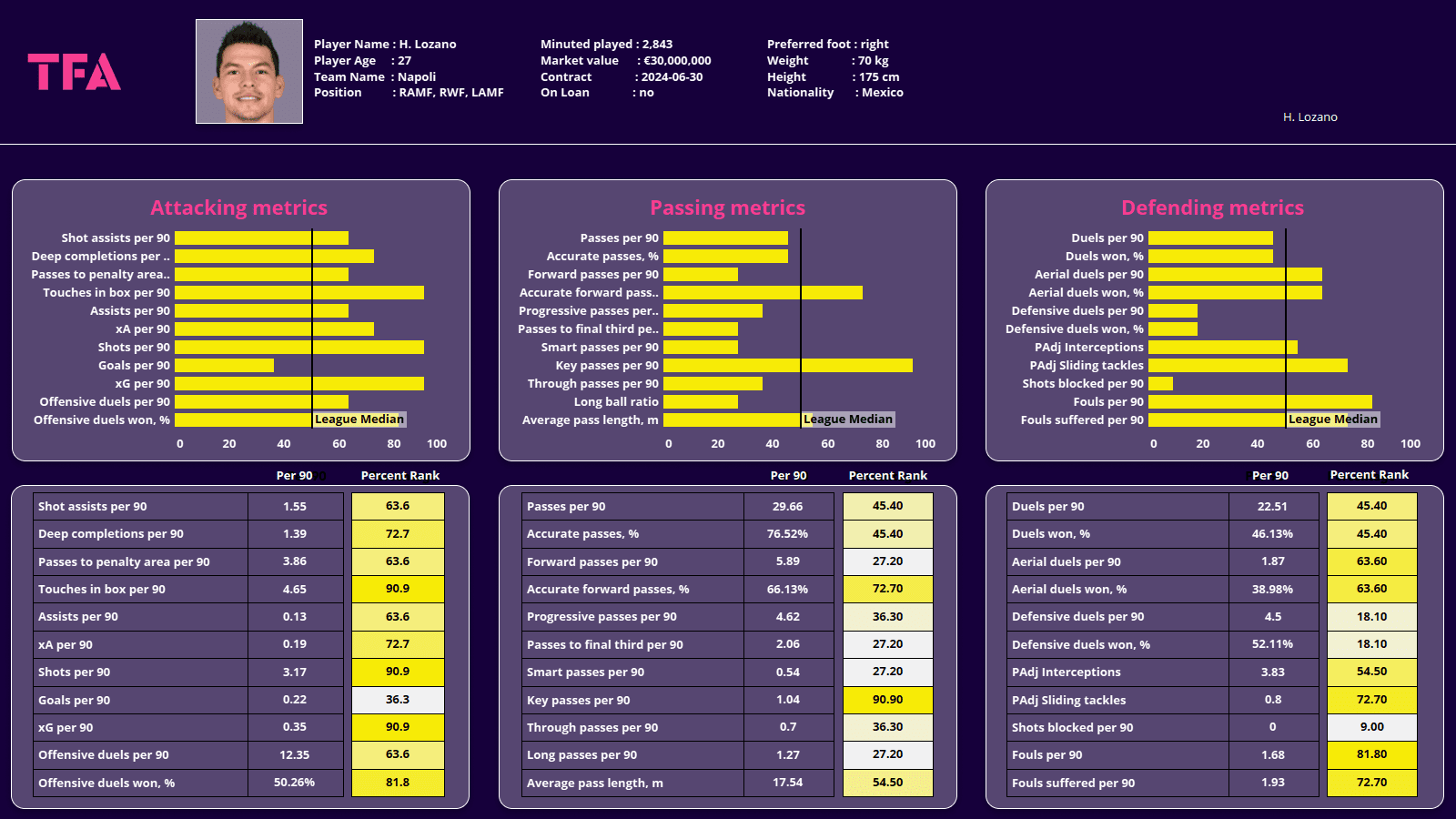
A couple of years ago, this spot would definitely have gone to Jiménez. But, with the Wolves man suffering a series of injuries and coming into the World Cup with poor fitness levels, Chucky must take the mantle. His playing time at Napoli has been somewhat sporadic this campaign, making nine Serie A appearances, four of which are starts. He’s also made three Champions League appearances and played exceptionally well.
His passing and defending metrics are more good than great, but that’s not the focus for Chucky. When he dons the Mexican kit, he’s there to be a playmaker and box presence. His xG, shots, and touches in the box p90 all rate in the 90th percentile in Serie A. We do get a glimpse of the below-average goals p90 data, which could be an issue for Mexico, but Chucky is irreplaceable in this squad.
He’s not only Mexico’s biggest talent, but he’s also the most consistent player in the squad. Mexico will need him to put his goal-scoring woes behind him and come through in the final third. Their attacking production depends on it.
Tournament prediction
With seven consecutive Round of 16 exits, Mexico’s goal has consistently been to take the next step, to reach the quarterfinals. They haven’t advanced to that stage since 1986, 36 years ago.
Argentina is not only one of the favourites in the tournament, but they’re also heavily favoured to win the group. If, hypothetically, Argentina does secure the first spot and Mexico finish second, that likely sets up a Round of 16 match against France, a top-two favourite to win the World Cup. Breaking the Round of 16 curse is once again a tall task.
There is a great deal of pessimism among the Mexican cohort. Martino’s men have just two wins in their past seven games, one of which was against Suriname. They’re entering the tournament on a low note.
The first match against Poland is critical. Mexico should have the quality to see off Saudi Arabia, but it’s the Poles who look most threatening for that second spot in the group. Mexico expects to progress to the knockout rounds of the World Cup, but they certainly cannot overlook Robert Lewandowski and Poland. If they do so, the likely Round of 16 opponent is France.
Knockout tournaments are especially chaotic. Anything can happen. That said, an 8th consecutive Round of 16 exit seems likeliest for Mexico.

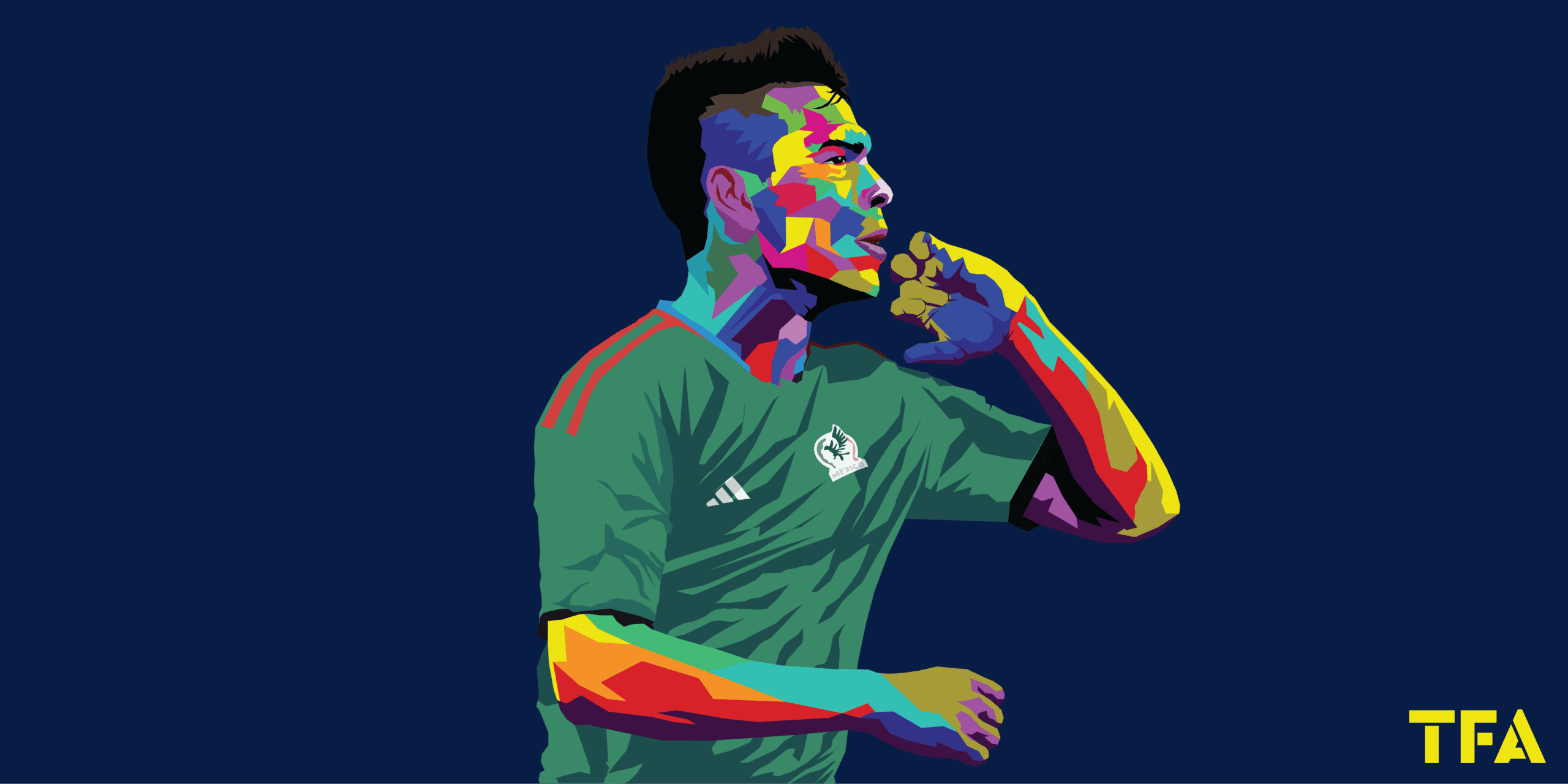


Comments